Calls for more controls on Great Glen's feral pigs
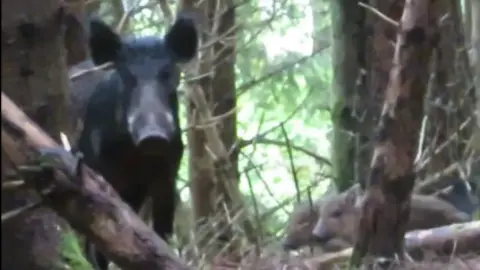 UGC
UGCFeral pigs are out of control in the Highlands' Great Glen, according to some local residents.
The animals have been blamed for killing sheep and damaging grazing land on crofts and farms.
There are calls for a reduction in numbers of the pigs, which include escapees and others that have been illegally released to roam free.
But national agency NatureScot said there could be a few thousand feral pigs across Scotland and primary responsibility for dealing with them lay with individual landowners.
Wild boar are a native species to Scotland, but were hunted to extinction about 700 years ago.
Over about the last 10 years, populations of free-roaming pigs have become established in Dumfries and Galloway and the Highlands.
NatureScot refers to these animals as feral pigs, and said they include hybrids - a mix of boar and domestic pigs following interbreeding.
The public body said it has best practice guidance on controlling the pigs.
Measures can include shooting them.

Between Inverness and Fort William, the Great Glen is an area of lochs, hills, moor and forests as well as croft and farm land.
Seven generations of Catherine Mclennan's family have farmed in the hills above Loch Ness, near Drumnadrochit.
"The family has never experienced anything like this - the devastation," she said.
The Mclennans' keep horses and cattle.
They used to farm sheep but sold off a flock of 150 in 2018, blaming feral pigs for killing and eating sheep.
Ms Mclennan said: "We were coming across carcasses, some with the whole fleece rolled back and the carcass stripped to the bones and the back broken."
She said feral pigs had also damaged pasture by rooting up ground to find food.
"We are putting in thousands of pounds a year just reseeding pasture and keeping our animals safe," said Ms Mclennan.
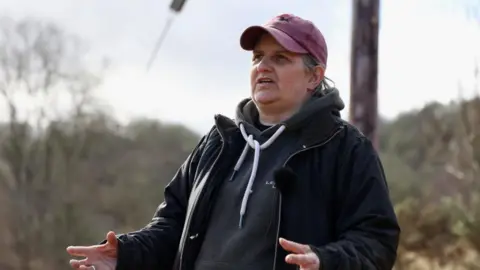
Ms Mclennan had her own close encounter while out one night checking on her horses - catching sight of a pig in the beam of her spotlight.
She said: "I switched off the light and stood thinking 'what am I going to do?' I put the light back on and the pig looked at me before running off at a fair rate of knots."
Two pigs were also shot on her land just after Christmas.
She said: "They looked like prehistoric animals - the size of them.
"I did feel sorry for them, but it's the amount of damage they are doing.
"They are a menace. I would like to see their numbers down."
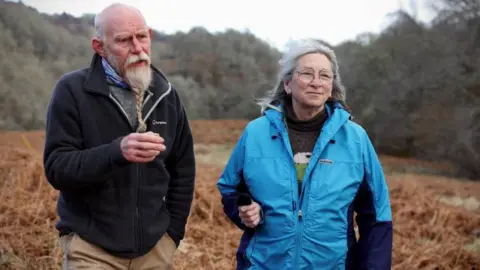
Alison Strange and Fergus Mould run a nearby textile business.
They have lived in the area for 15 years and first noticed evidence of the pigs in 2013-14.
They said there has been increasing signs of pig activity in fields, native woodland, and also along the Great Glen Way walking route.
Ms Strange, an ecologist for more than 30 years, said: "They are going for roots, bulbs of onion couch and bluebells, white truffles and invertebrates.
"They get their snouts under the turf and roll it up.
"In some places the ground looks like it has been ploughed."
Mr Mould said it was interesting to have such large animals in the area, but added: "They are feral and not meant to be here.
"I understand wild boar have an environmental role, but these are not wild boar.
"Even if they were wild boar you would still have controls like you would with any reintroduced animal."
Mr Mould said a more uniform, landscape-wide approach to feral pigs was needed.
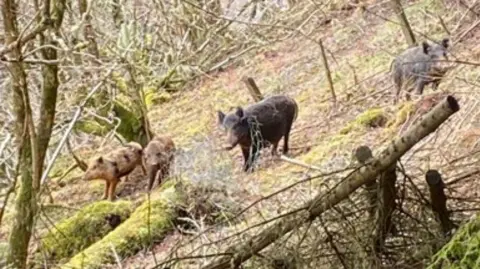 UGC
UGC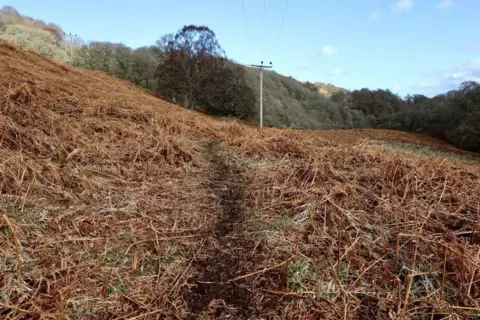
Toryn Whitehead, a social scientist and PhD researcher at King’s College London, has spent time in the area studying people's relationships with the animals.
He said: "Feral pigs and the people living alongside them are in legal limbo.
"At the moment the animals in the Great Glen are termed as feral pigs, but some people look at them as wild boar.
"But largely wild boar don't exist because there has never been any formal reintroduction of wild boars."
Mr Whitehead said the situation had led to the image of the pigs being "romanticised by some and vilified by others".

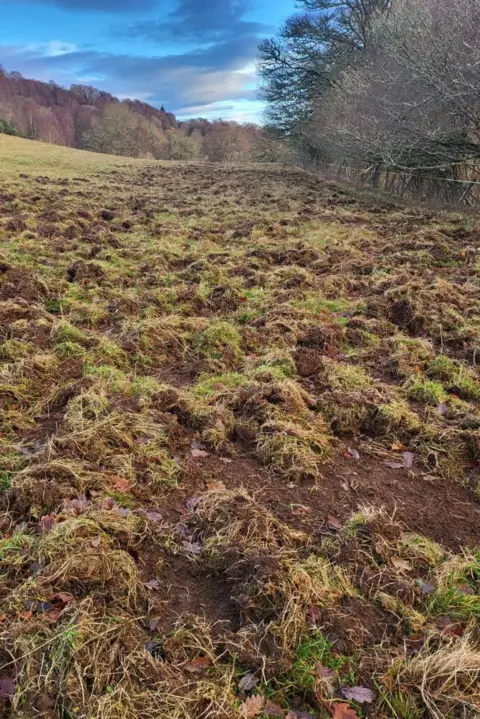 Catherine Mclennan
Catherine MclennanNatureScot said there were public concerns around feral pigs.
A spokeswoman said: "Feral pigs breed prolifically and, if uncontrolled, their rooting behaviour can cause damage to the environment and to property.
"In particular, they pose a major threat to agricultural crops and pig farms and may undermine efforts to control future outbreaks of animal disease.
"If their numbers increase, they will also present a road collision risk."
Forestry and Land Scotland (FLS), a major local landowner, said it was aware of and actively managing feral pigs in the Great Glen.
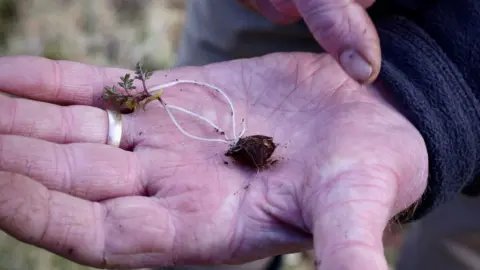
OneKind, which campaigns on animal welfare, said there was a lot of negativity around the pigs and called for a way to be found for them to be able to live alongside communities.
The charity said: "If there is evidence of substantial harm being caused by any wild animal we recommend the International Consensus Principles for Ethical Wildlife Control be followed.
"We would particularly emphasise that the first principle includes ‘developing a culture of coexistence’, which seems to be sorely lacking in this instance."
